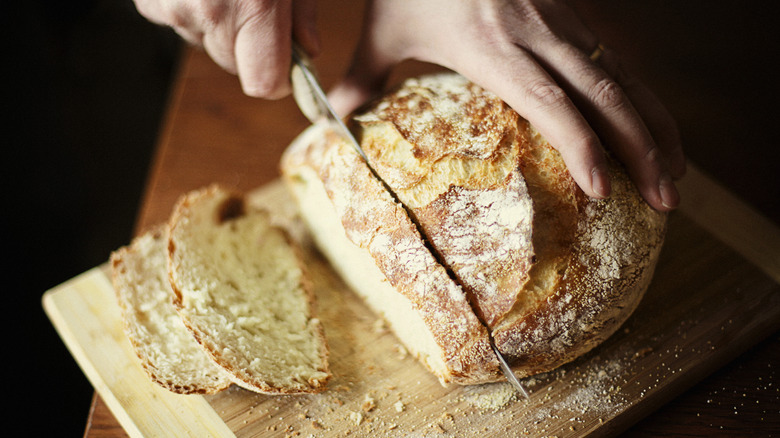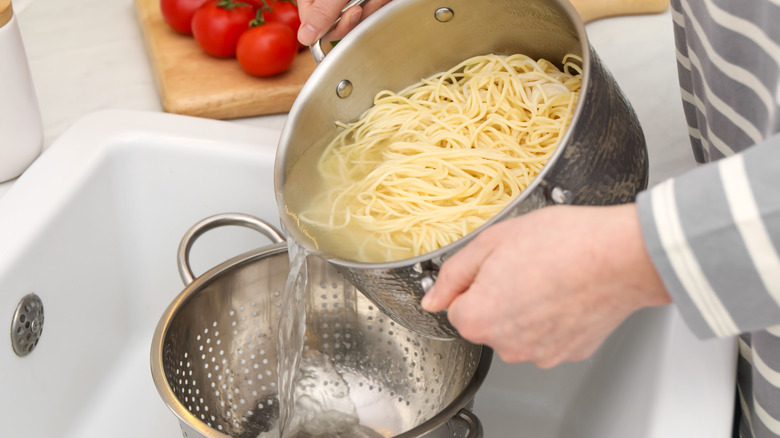The Usually Discarded Ingredient You Need For The Best Bread Ever
Pasta is arguably one of the simplest dishes to make. You know how it goes — boil salted water, insert noodles, strain, and voilà! You have an easy weeknight dinner. But next time when you're about to strain the noodles and discard that residual water, you might want to consider holding onto it. Sure, a splash of that salty liquid can help enhance the flavor of your pasta sauce and keep noodles evenly coated in it, but there's something even more valuable in that foggy liquid that can help you bake an incredible loaf of bread.
According to English cook, TV host, and author, Nigella Lawson, pasta water not only helps with a bread's rise but also helps it to achieve an impeccable texture as well. This is due to the water being rich with an important, versatile ingredient that aids in baking: starch. When the noodles simmer in water they release starch, which is what gives it that notably cloudy appearance. Lawson isn't the first to make this discovery, others agree that swapping out pasta water for plain, warm water in your bread recipe will make for the ideal loaf: crisp and crunchy on the outside with a soft and chewy middle.
The science behind pasta water and how to incorporate it into your recipe
Although a bread recipe seems simple when you read the ingredients, the inner workings of the science taking place beneath the surface are complex. So, what goes into achieving a perfectly risen loaf? Almost all recipes call for warm water combined with yeast and sugar. Sugar in essence feeds the yeast, helping it to produce carbon dioxide, which results in the bread rising. Starch itself is a chain of glucose molecules, in other words, sugar. When combined with hot water, starch expands and gelatinizes. When used in baking, the gelatinized starch reinforces gluten and absorbs moisture, thus helping bread to maintain its rise during the baking process.
Of course, being that most people aren't following a specific recipe when throwing together pasta, the amount of starch in the water isn't exact, but there's a few tips to help properly include it in your bread recipe. Try to use the same exact amount of pasta water as you would plain water. If the kind of bread you're making is a bit denser, like a whole wheat, more noodles and less water will result in a starchier liquid. And if it's a lighter loaf like a ciabatta, more water and less noodles work best. But since there's no way to know exactly how much starch there is, it's imperative to taste test the water before adding it into your mixture. If it's too salty, dilute the solution with fresh water and nix any additional salt in your recipe. If you're planning on baking later, simply hold onto the leftover pasta water by freezing it in ice cube trays. It will certainly come in handy during your next baking session.

